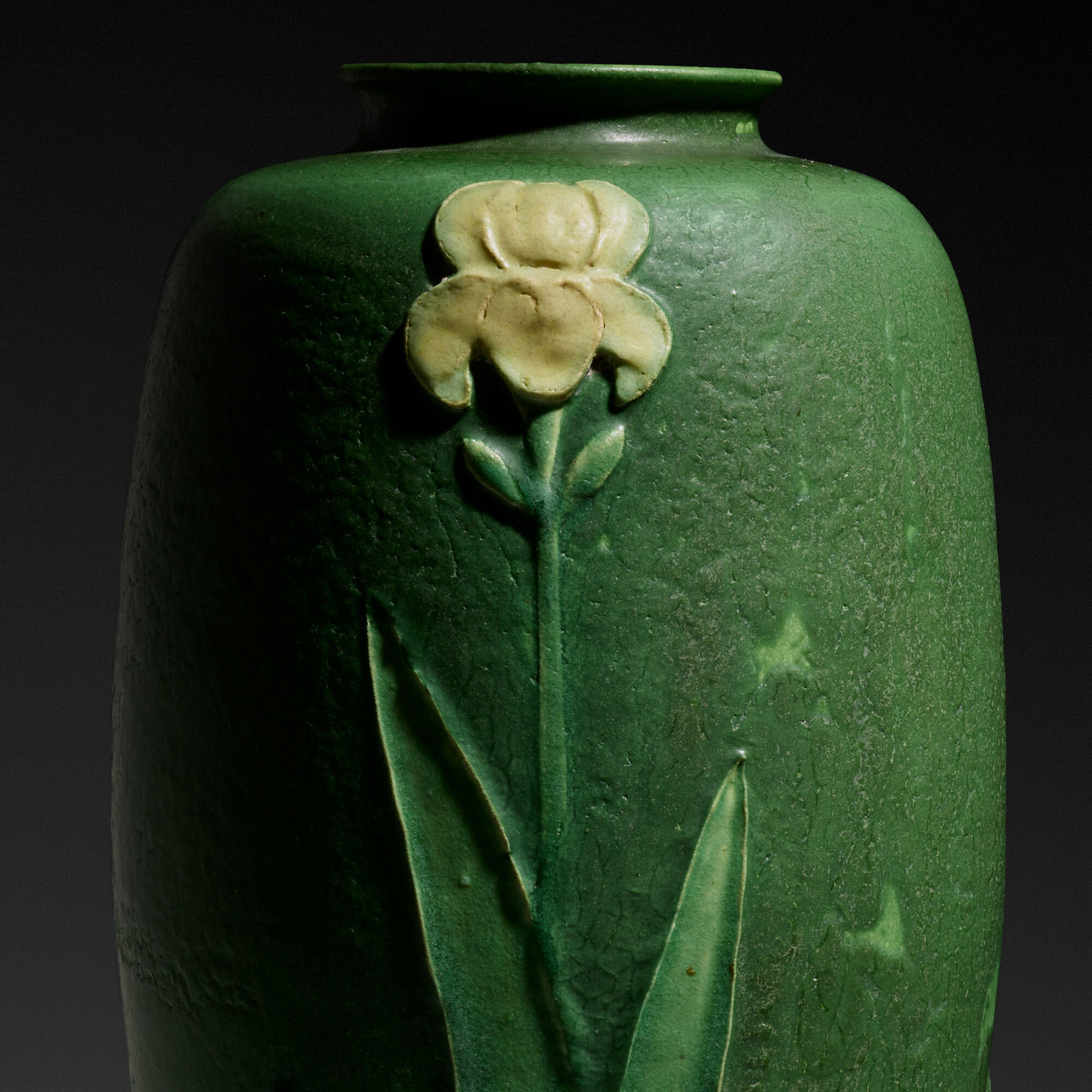131
131
USA, c. 1909
glazed earthenware decorated in cuerda seca 11½ h × 11½ w in (29 × 29 cm)
glazed earthenware decorated in cuerda seca 11½ h × 11½ w in (29 × 29 cm)
estimate: $7,000–10,000
result: $13,750
provenance: Private Collection, Vermont
literature: The Ceramics of William H. Grueby, Montgomery, pg. 66
This work will ship from Rago in Lambertville, New Jersey.

























